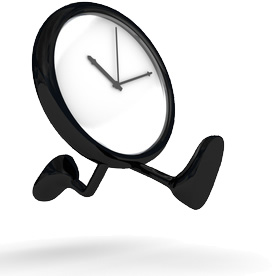 Have you ever wondered about counties that have time limits on the presentation of evidence at contested hearings. The Dallas Bar Association featured an article by O’Neil Wysocki Senior Shareholder Michelle O’Neil in its September 2016 issue on Dallas Texas family law and divorce cases. The article is reprinted below. Dallas Bar Association Headnotes September 2016
Have you ever wondered about counties that have time limits on the presentation of evidence at contested hearings. The Dallas Bar Association featured an article by O’Neil Wysocki Senior Shareholder Michelle O’Neil in its September 2016 issue on Dallas Texas family law and divorce cases. The article is reprinted below. Dallas Bar Association Headnotes September 2016
Our court system is busy and dockets are crowded. Some judges manage this issue by placing time limits, sometimes severe restrictions, on litigants’ presentation of evidence. Handling these time restrictions can make the difference between effective presentation of a case or losing. This is one instance where it is imperative to be familiar with the judge’s preferences and local rules before venturing into unknown territory.
How does an effective attorney handle getting all of the evidence forward in the face of a time crunch in a hearing or trial? Here are the Top 5 Strategies:
Request for Relief
A one-page summary of the rulings that you are requesting from the court at the end of the hearing is essential. This is where you tell the Judge what you want in a fashion that is easy to understand. The request for relief also serves as an outline for all of the presentation of evidence in your case. This is especially true when your client testifies, as you can simply follow the request line by line to efficiently expand on the points you want to make.
Summary of Voluminous Documents
One of my favorite tricks for keeping the presentation efficient is to provide a summary of the point you are making on top of the voluminous exhibit. So, for example, if you are offering bank records to show certain transactions for purchase of jewelry for a paramour, prepare a summary page to go on top of the exhibit with date and page references and quotes from the exhibit. Assuming the summary is accurate, this can speed up presenting the information.
Stipulate as to the Admissibility of Evidence
When dealing with a professional and courteous opposing counsel, often you can reach an agreement regarding the admissibility of certain exhibits. Financial statements of the parties, medical records, bank statements, photographs, and other common types of evidence can be admitted by prior agreement without having to take the time to cover admissibility predicates.
Be Prepared and Organized
Preparation in advance is a key to effectively presenting a hearing or trial on a time limit. You should meet with your client and other witnesses in advance to review the time limits and how that may affect the way they answer questions. Also, provide an outline or roadmap to highlight the essential points of the client or witness’ testimony. In my experience, some witnesses tend to be long-winded, maybe because of inexperience testifying or being nervous. This can really hurt a time limited presentation. So, helping the witness understand how to efficiently answer the questions will give back essential minutes. I have even been known to object to “nonresponsive” as to my client’s own testimony if the client goes too far afield. If the witness’ testimony is something that cannot be presented quickly, consider taking the witness’ deposition. This will allow you to present the deposition as an exhibit in evidence and a summary on top (see point #2) without spending time out of your budget to make the point. Another organization tip involves preparing a notebook of exhibits to provide in advance to the Judge, court reporter, and opposing counsel to save time in walking exhibits around the room.
Keep It Simple and Focused
Staying focused on what is really important to achieving the goal of the hearing or trial is a key to effective presentation. Know how much time you want to budget for each witness, including direct and cross, leaving some extra time in case the other side calls an unexpected witness. If an opposing witness isn’t important or has only a minor contribution to the case, don’t be afraid to ask zero questions and pass the witness. Don’t waste time on non-essential witnesses or issues. Don’t go down rabbit trails that aren’t essential to the goal.
In summary, when presenting a case on a time budget, using every way to get to the point efficiently will increase the effectiveness of your presentation. Judge Doug Robison in Denton County uses the acronym B.L.U.F. for “Bottom Line Up Front”, to illustrate the need to tell the judge from the beginning what the hearing is about. In other words, get to the point quickly.

